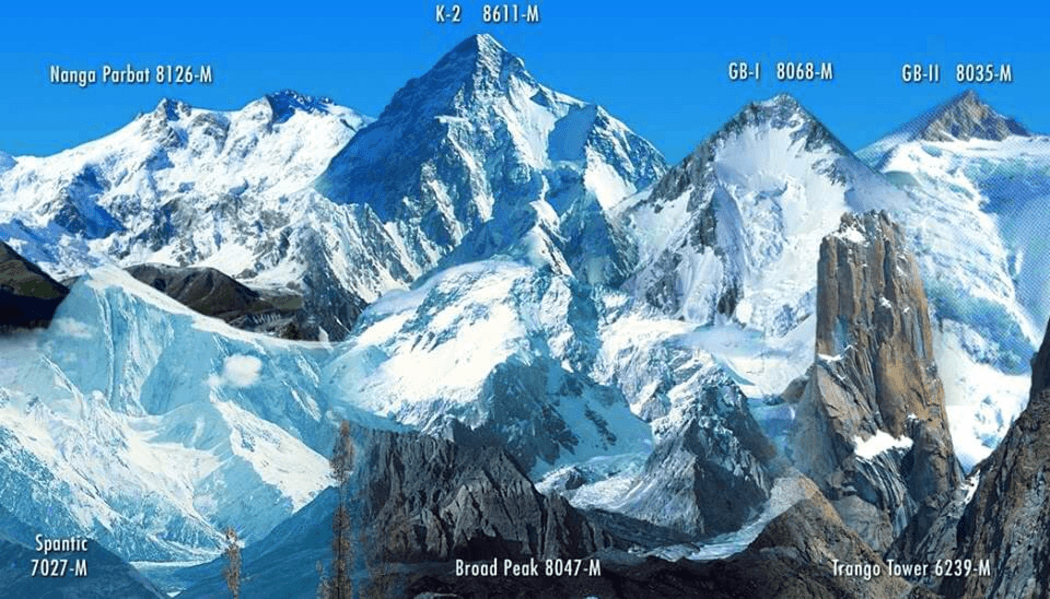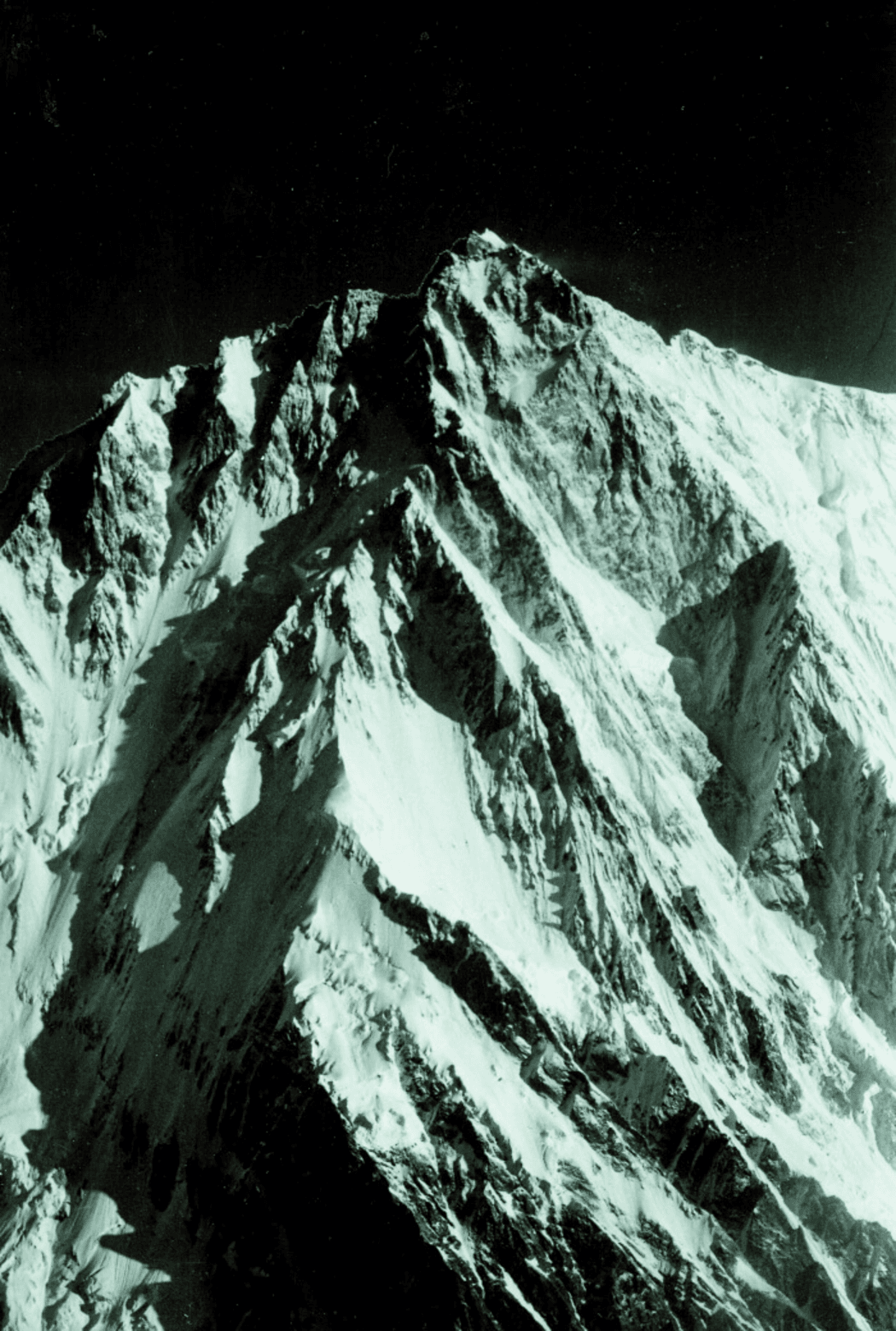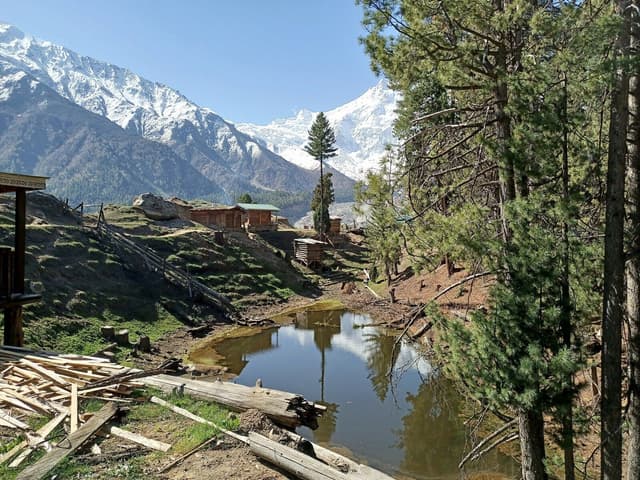Blog Details
Nanga Parbat - the "naked" 8126m Peak
Introduction: This deadly mountain stands amongst the world’s highest and most daunting mountains. Nanga Parbat (8,125 m (26,658 ft) is even in a club on its own with Mount Everest (8,848 m/ 29,029 ft) no less!
With a surrounding wilderness area that could easily be confused with the Swiss Alps, Nanga Parbat has a history of challenging the very best mountain climbers in the world and still holds on to several unconquered challenges.

- Mout Name: Nanga Parbat
- Height: 8,125 m (26,658 ft)
- Location: The western Himalayas, in the Gilgit-Baltistan region of Pakistan, Asia.
- First Climbed: on the 3rd of July 1953 by Herbert Buhl.
- Climb Time: 7-10 days.
- Best Time to Climb: April to May or September to October.
History of Nanga Parbat
The mountain's name means 'the naked mountain' in Urdu. Locally, it’s called Deo Mir or Diamir, which means either 'the huge mountain' or 'the abode of fairies.' You can choose which you like!
Gilgit-Baltistan, the local area, has a strong cultural identity. Although part of modern Pakistan, it was under British colonial rule until 1948. That year, it joined the new country during annexation. The people pride themselves on being peaceful, but they face conflict with the Pakistani government. They seek recognition as equal citizens, and some call for independence.

Nanga Parbat has a fierce reputation. Known as the ‘man-eater’ or ‘killer mountain,’ it claimed 31 lives before anyone reached its summit. Since then, 61 more climbers have died there, all for fewer than 300 successful ascents.
Annapurna is the deadliest mountain, with a death rate of 27-41% (8,091 m/26,545 ft). However, Nanga Parbat and nearby K2 (8,611 m/28,251 ft) also have high death rates. Some sources rank Nanga Parbat as the third deadliest, with a rate of up to 22%. Rather than a single mountain, Nanga Parbat is an isolated mountainous massif developed along a massive ridge, which includes several peaks higher than 7000 m. The highest peak - the real summit of Nanga Parbat- culminates above three vast faces: the Diamir face (NW), the Rakhiot face (NE), and the Rupal face (S). The Diamir face can be reached from the valley of the Diamir River, climbing between the Mazeno ridge and the Ganalo peak up to the Diamir glacier and forward to the summit. The Rakhiot face is a vast, steep slope of 7000 m starting at the Indus river at 27 km from the top, and is one of the ten highest differences in level in the world. The Rupal face is a precipitous wall of 4500 m – the highest mountain wall in the world.
Nanga Parbat was first seen in the mid-19th century by German explorers Adolf and Robert Schlagintweit. They recorded details about the mountain’s south face. The first person to attempt a climb was an Englishman named Albert Frederick Mummery in 1895. Mummery became a legend in mountaineering for his bold climbs in the Alps and his idea of climbing “by fair means.” This meant he did not use pitons or other artificial gear.
Instead of the snowy south side, Mummery climbed from the northwest on the Diamir face. He was with two British mountaineers, Norman Collie and Geoffrey Hastings, two Gurkhas, Raghobir Thapa and Gaman Singh, and Colonel Charles Granville Bruce. Mummery started with short climbs to help everyone adjust and train the Gurkhas, inexperienced with high altitudes.
Nanga Parbat was first seen in the mid-19th century by German explorers Adolf and Robert Schlagintweit. They recorded details about the mountain’s south face. The first person to attempt a climb was an Englishman named Albert Frederick Mummery in 1895. Mummery became a legend in mountaineering for his bold climbs in the Alps and his idea of climbing “by fair means.” This meant he did not use pitons or other artificial gear.
Instead of the snowy south side, Mummery climbed from the northwest on the Diamir face. He was with two British mountaineers, Norman Collie and Geoffrey Hastings, two Gurkhas, Raghobir Thapa and Gaman Singh, and Colonel Charles Granville Bruce. Mummery started with short climbs to help everyone adjust and train the Gurkhas, inexperienced with high altitudes.
Once they reached about 6,666 meters, Mummery thought they were ready for a final climb to the summit. However, Collie, Hastings, and Bruce were not fully acclimatized and decided to turn back. Mummery continued on with the two Gurkhas, aiming to cross a passage between a secondary peak of Nanga Parbat and Ganalo Peak. He planned to meet his teammates on the northeast side, at the Rakhiot face, in a few days. The three men left on the morning of August 24, but none were ever seen again.
Nanga Parbat was the last but one of the 8000ers to be climbed in winter. After a long list of attempts in the course of about half a century – if we consider Herrligkoffer’s expedition of January 1964 as the first try (though he did not think of a ‘first winter ascent’ at the time; he wanted the glory of the absolute first ascent!) – on 26 February 2016 an international team reached the summit, marking the first winter ascent of Nanga Parbat.
That team comprised three members from three different countries. They were (in alphabetical order) - the Italian Simone Moro, the Pakistani Muhammad Ali Sadpara, and the Spaniard Alex Txikon. The three of them had participated in previous attempts, and this time, with Simone Moro, there was also a young lady climber - the Italian Tamara Lunger, who took ill just beneath the summit. She deserves a mention because, not wanting to hinder her three companions' completion of the ascent, she refused any help and descended alone to the camp below. The success of three men from three different countries instead of the ‘victory’ of a single nation made this event cherished by mountain lovers worldwide.


 Fairy Meadows - Nanga Parbat Base Camp Trek (5-days)
Fairy Meadows - Nanga Parbat Base Camp Trek (5-days)